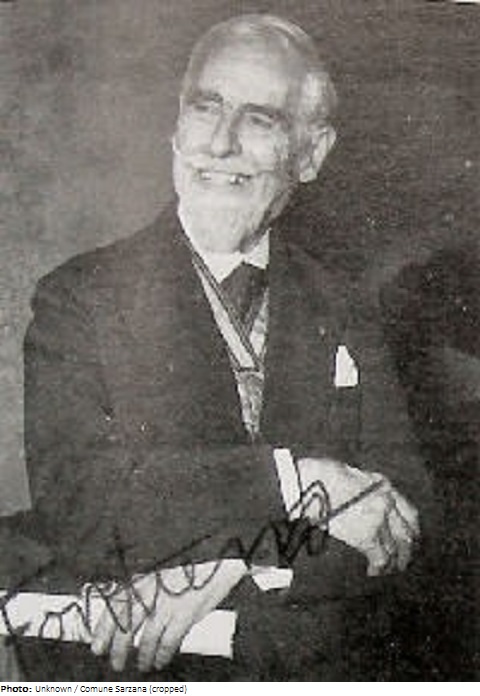Carlo Fontana was a descendant of a distinguished Italian family of artists, among them noted architect Domenico Fontana and the sculptor Pietro Fontana. Carlo received his training in the marble workshops and studied at the Academy of Fine Arts in Carrara, earning the “Gold Medal” award in 1884, and the first prize in Roma in 1888. There he founded the artist group Vita Nova. At first he was close to verismo and made small sculptures and portraits. He was professor for plastic figures at the Academy of Fine Arts of Carrara from 1915-29, mostly executing classicist head-high sculptures and big monuments, such as the monument to the fallen of the First World War in Tivoli, and a marble and bronze monument to the fallen in the Piazza Matteotti in Sarzana. In addition, he also worked as a medalist, draftsman and art critic. In 1908 he won the competition for what would be his most famous work, a colossal group, the Quadriga of Unity, to be realized in bronze, designed to crown the porch of the national monument for King Viktor Emmanuel II in Roma, the analogous counterpart to Quadriga of Freedom by Paolo Bartolini. The work engaged Fontana for 20 years, and was only installed in 1928, the year he took part in the Olympic Art Competition “hors concours”. The building was designed by Giuseppe Sacconi.

 Italy
Italy ITA
ITA